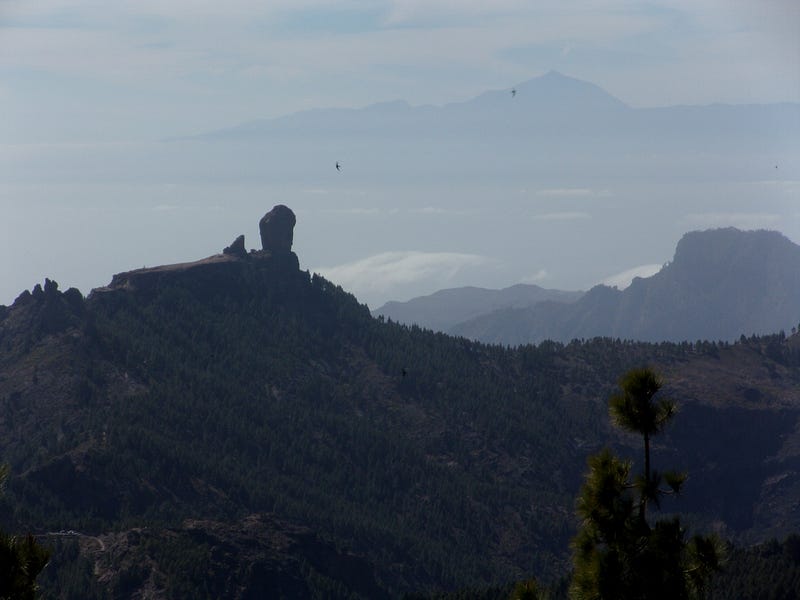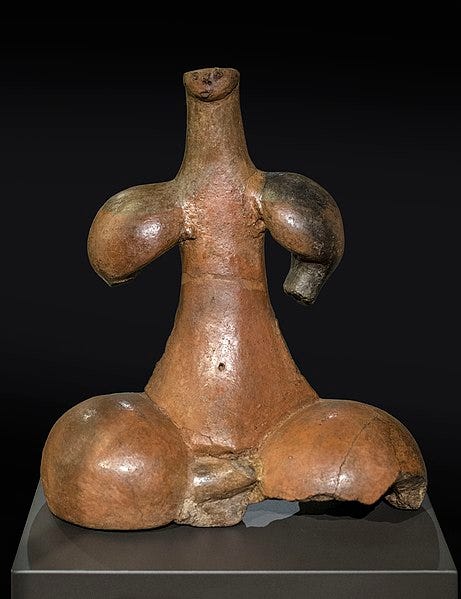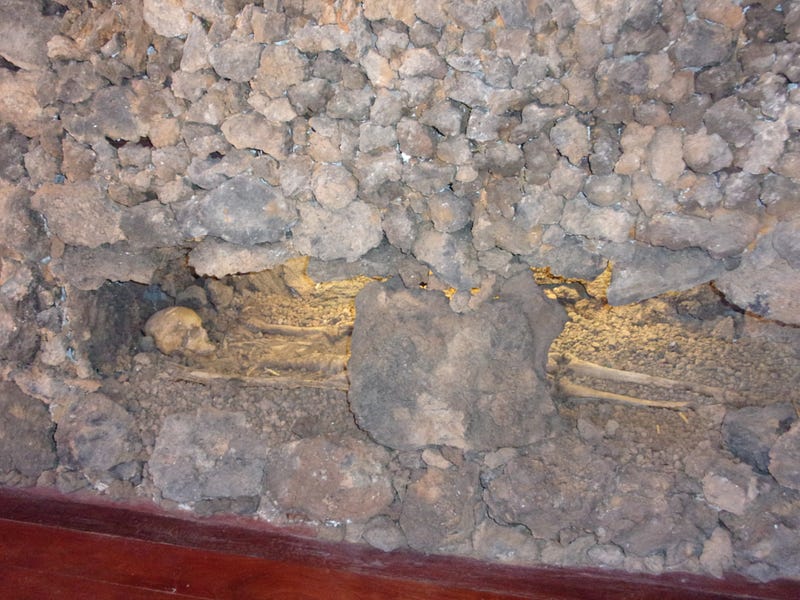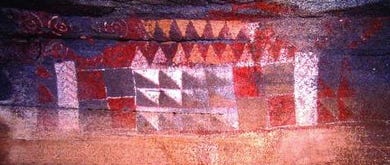Early Inhabitants of Gran Canaria
A Mystery Solved and Other Fascinating Facts

Gran Canaria
All the Canary Islands have volcanic origins, and Gran Canaria was formed some 14–9 million years ago; its main type of rock is basalt. It is the third largest island in the archipelago by area (1.560 sq km/602 sq miles), after Tenerife and Fuerteventura. It’s also the third tallest, after Tenerife and La Palma; Gran Canaria’s highest point is Morro de la Agujereada at 1.956 meters (6,417 feet).
The first known inhabitants of all the Canary Islands were Amazigh Berbers, from the regions now Libya and Sahara. They arrived around 3,000 years ago; evidence of their presence has been dated to between 500 BCE and the 15th century Spanish conquest.
Several tribes made their homes there, calling Gran Canaria: “Tamaran.” They grew grain, and kept pigs, sheep, and goats. Inhabitants of different islands largely remained isolated; there is no sign of travel between them, and each had its own individual culture. There are very few drawings of boats from that time.
The sub-tropical climate suits most agriculture, though later Spanish invaders destroyed much of the forests by logging and more intensive farming. Gran Canaria has large areas of flat land, ideal for agriculture. Its valleys have fertile sediments and abundant natural water.
The Canarios of Tamarán developed intensive agriculture quickly, and it is the only island with ancient silos, built for safe storage of food to distribute later. This efficiency freed others to develop advanced artesanal skills.
Gran Canaria has plenty of decorated ceramics; the museum at Las Palmas has pintaderas — flat clay shapes, each with a pattern. They were most likely dipped in dye and used for painting the body. Building also developed fast, with artificial caves and stone houses.
Despite low rainfall (annual average 228mm/9 inches), Gran Canaria is fertile, and suitable for sugarcane, bananas, grain, and coffee. Because of its mountainous terrain, there are many microclimates, from the desert dunes of Maspalomas to forest and stark, rocky peaks with ravines.
Allegedly, Ancient Romans knew about the islands from Juba II, King of Mauretania. They gave them the name “Canary” in reference to large dogs found on many of the islands (as in Canis lupus (wolf) and Canis familiaris (Fido)). But the Spanish never recorded the dogs’ presence, and some early immigrants were from a tribe called “Canarii,” so it’s just as likely the name came from that. Like a lot of ancient history, there are several versions.
We do know that the little yellow-breasted songbirds were named after the islands where they live in flocks. Canaries take the title “songbird” seriously; you hear their exuberant singing long before you see them.
Spanish conquest
The Spanish found one tribe of Canarios in the North and one in the South.
In 1461, Diego de Silva made an attempt to conquer the island but failed. In 1478, Juan Rejón, who founded Las Palmas later that year, arrived at La Isleta. Rejón and his associate dean Bermúdez could not pacify the Canarios, and argued among themselves. Pedro de Algaba was sent from Castile and arrested Rejón, returning him to Spain, where he was tried and exonerated. He returned to the islands.
Spain sent Pedro de Vera as the new governor of Gran Canaria, and he arrested Rejón again. Having the stronger backing of the Crown, and the assistance of Pedro Fernández Cabrón, de Vera fought on and his name is the one associated with finally conquering the island in 1483. The famous warrior Doramas, ennobled by the leader Guanarteme, resisted at the mountain which still bears his name, but was killed at Arucas in 1481.
This was the first conquest for the Realenga system (for the Crown).
So what were Cromagnon people doing there?
I was puzzled that the skulls at Museo Canario in Las Palmas are often described as “Cromagnon” The timeline is dubious — always a red flag. Cromagnon remains were first discovered at a rock shelter near Les Eyzles in France, in 1868. They are dated to 10,000–35,000 years ago.
If people from this culture were ever in the Canary Islands before the Berbers arrived 3,000 years ago, there is a very long gap, during which these alleged previous inhabitants left no sign of their existence. We know that prehistoric peoples travelled far more than was previously thought, but there is no proof of anyone living on these islands before around 500 BCE. You can’t live even a very simple life without leaving traces.
Yet many people believe the exhibition of skulls at Las Palmas Museum is: “the largest collection of Cromagnon skulls in the world.”
The Explanation
Las Palmas Museum was founded in 1879; the main founder was Dr Gregorio Chil y Naranjo. He studied possible links between the Mediterranean and earlier races of homo sapiens in Europe. Racial classifications were a popular topic of scientific study then; recently we have realised its dubious side, with connotations of racism and imperialism.
Staff at the Museum believe this investigation somehow got confused with later material evidence, leading to the idea that the skulls were Cromagnon in origin.
The Museum has many interesting exhibits relating to pre-Hispanic peoples in Gran Canaria, mainly discovered during its own explorations in the late 19th and early 20th centuries, including the skulls.
All are Amazigh-Berber. There is extensive evidence of these people; caves they inhabited, (such as Cuatro Puertas and Cenobio de Valerón), engraved stones, and pottery they made.

No evidence has been found of any earlier inhabitants. When I checked, the internet mostly gave me travel advice but nothing that answered my questions, so I contacted the museum directly. They responded promptly, clarifying that almost all their exhibits had been found in Gran Canaria and thoroughly examined. Only a few exhibits were from other islands. Most importantly:
None of the skulls in the exhibition is Cromagnon in origin, and all are from the Canary Islands. So now we know.
The collection of skulls, and the rest of the exhibits in the museum, are well worth visiting. Gran Canaria has an interesting history, even if it’s “only” 3,000 years old.
For people who love history, here are two places I went this year and recommend:
Maipés

Near the centre of Agaete, and well-signposted, this is a complex of pre-Hispanic burials, covering over a square kilometre. It gets its name from “Malpaís” (bad land), which refers to the hard, rocky areas found in volcanic regions. Around 3,000 years ago, three volcanoes (Jabalobo, Berrazales and Fagajesto) erupted, filling this valley with lava.
Later, some 600–700 tumuli were built there, the oldest dated to 1,300 years ago. We can’t be sure how many were lost when Spanish farmers covered the lava with soil for agriculture.
The tumuli vary considerably in size and type of structure, the largest ones are 8 metres in diameter and 3 metres high. Others are much smaller, reflecting the status of those buried or changing fashions in tomb-building; most likely both. Stone slabs surrounded many of the bodies, buried in coffins, others just wrapped.

One excavation revealed part of a wall, with 8 bodies buried outside it. White marks are actually marine deposits, left by a tsunami caused by an eruption near Güimar on Tenerife.
In 1973, Maipés was declared a site of Historic Heritage, and restorations were done in 2008. It is now easy to access for all and has helpful interpretation centres.
Cueva Pintada (the Painted Cave) — Galdar

This beautiful cave and its surrounding settlement have been badly damaged over the years, but there is still plenty to see. Because of the delicate condition of the art, the painted cave is now behind glass, and photography isn’t allowed now.
I’d guess the above photo is enhanced to bring out the colours; please don’t be too disappointed with what you actually see. I was there in 2014, and it now looks less vivid than I remembered, but human memory is seldom reliable so I could be wrong.
The cave, painted with triangular patterns and swirls by early Canarii, was first discovered by a farmer in 1862. In 1882, Diego Ripoche made drawings of the patterns, and noted corpses and ceramic ware at the cave. For decades, people came and went, while water and chemicals from farming percolated in, all harming the delicate artwork.
It was 1967 when a group started a campaign to prevent further deterioration of the paintings. In 1972 , the site was declared a Monument of Artistic History and it was closed to the public. After thorough excavations and restorations of the cave and village, it was re-opened on 26 July 2006.
Tours are supervised, with a walkway through the village, to prevent more damage. The Museum has exhibits of painted pots, cooking utensils, and other objects found. The site was occupied from the 6th to 11th centuries, and Spanish coins from the 15th and 16th centuries were also found there.
The cave village of Cuatro Puertas, near Gando airport, is also highly recommended, as is Cenobio de Valerón and the museum in Las Palmas.
Sources
https://es.wikipedia.org/wiki/Gran_Canaria
https://cultureandhistory.revistas.csic.es/index.php/cultureandhistory/article/view/266
“Tras las huellas de los aborigines” by Harald Braem, 2010. Editorial Verena Zech, Santa Úrsula, Tenerife, Spain.
La Historia de Canarias, by Manuel de Paz-Sánchez and Oliver Javier Quintero-Sánchez, Centro de la Cultura Popular Canaria, 2008
Email from El Museo Canario, Las Palmas, to the author, 24 August 2023
